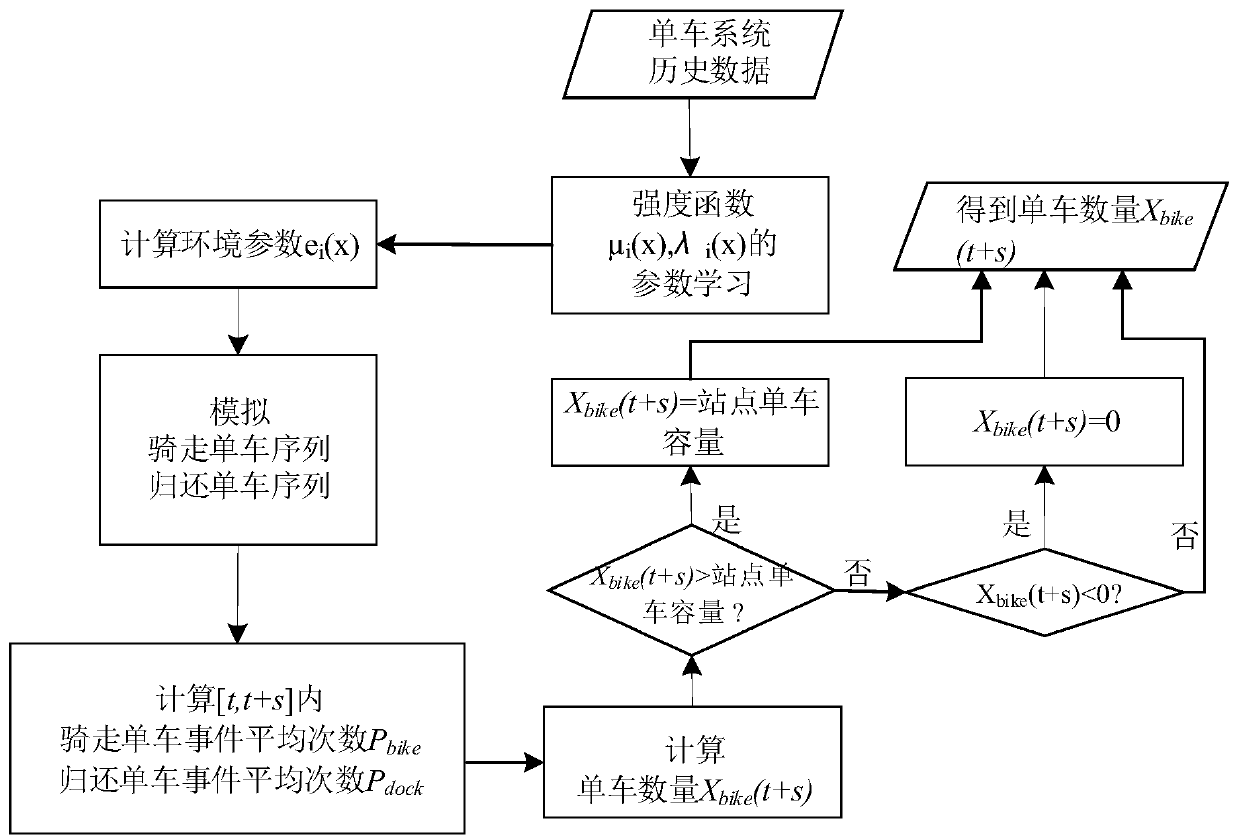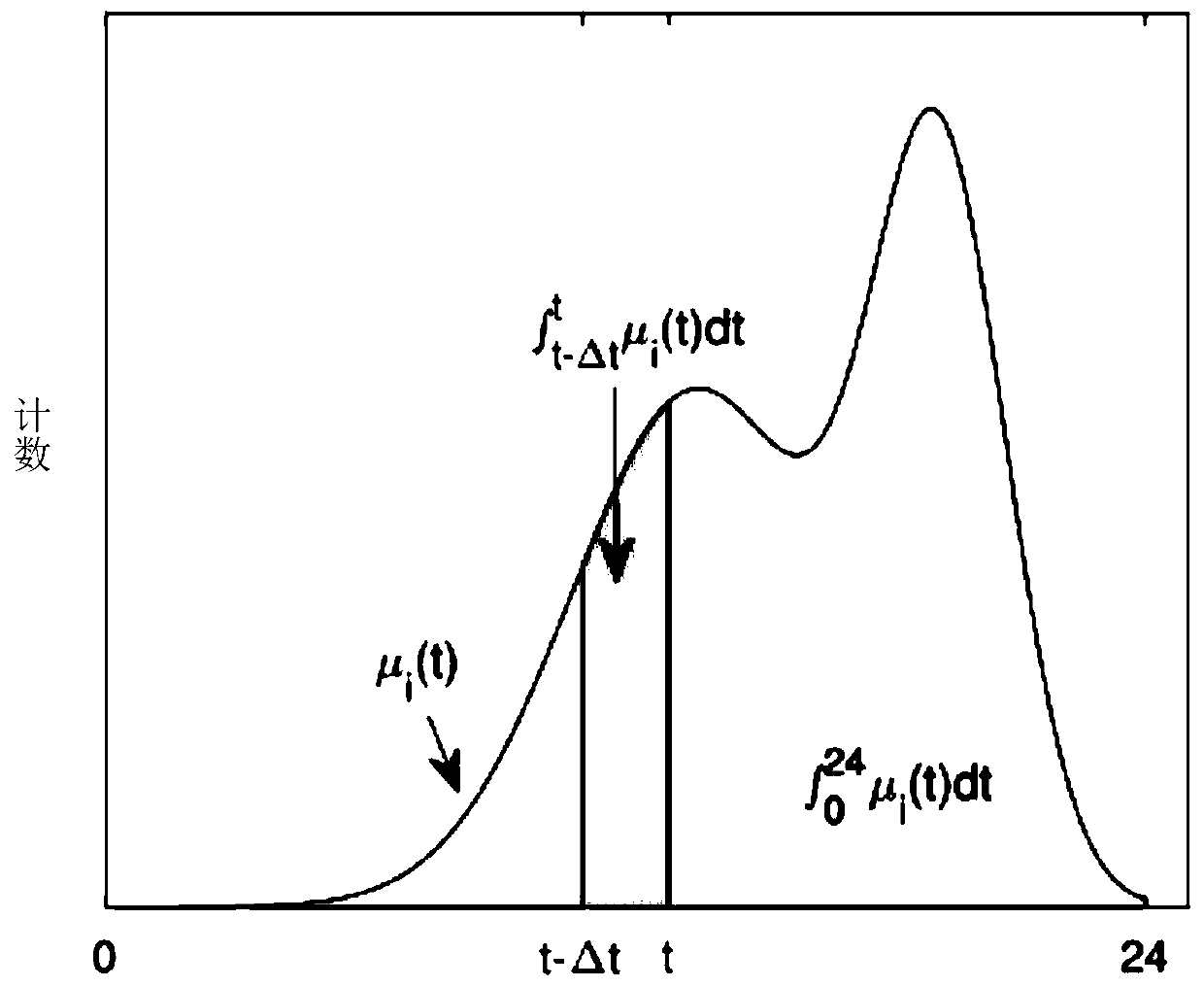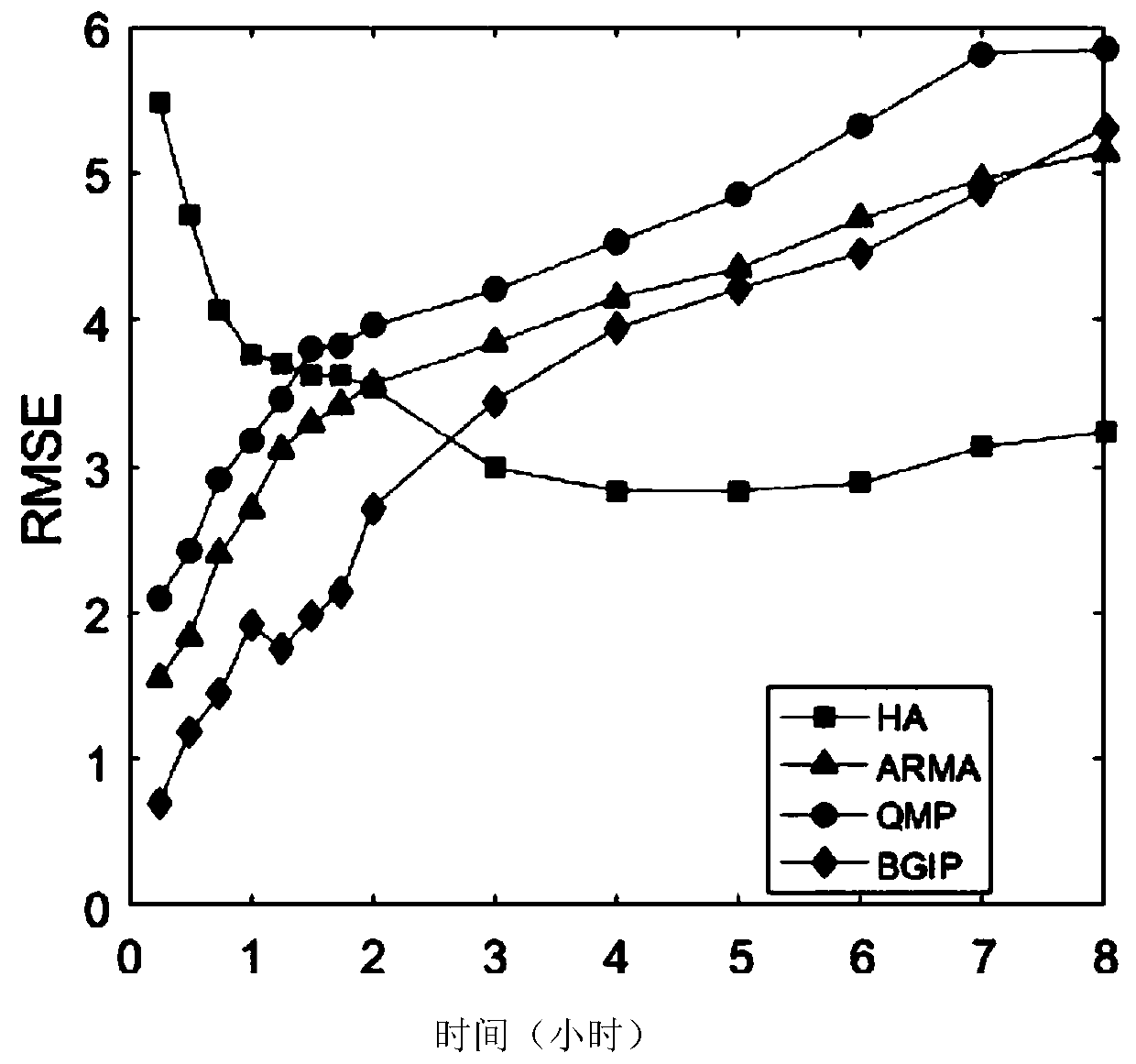A Bicycle Quantity Prediction Method Based on Binary Gaussian Inhomogeneous Poisson Process
A forecasting method and bicycle technology, applied in forecasting, data processing applications, complex mathematical operations, etc., can solve problems such as delays, inability to conduct comprehensive research, and low prediction accuracy of the number of bicycles at the site
- Summary
- Abstract
- Description
- Claims
- Application Information
AI Technical Summary
Problems solved by technology
Method used
Image
Examples
Embodiment 1
[0135] The operating environment of this embodiment is: Matlab2016b, Java (JDK 1.7), Windows 10, CPU (Core i7 (7500U), 8GB RAM.
[0136] In this embodiment, for the bay area bicycle system, bicycle station A (i=10), assume that the current date is August 23, 2013, at 10 am, and the number of bicycles is 10, that is, X bike (10 o'clock) = 10, predict the number of bicycles at the bicycle station A at 12:30 in the future.
[0137] Specific steps include:
[0138] S1. According to the historical data of the bicycle station A, extract the bicycle riding time series data of the past 10-15 days (that is, from the 13th to the 22nd, excluding the 23rd) from the bay area bicycle management system. sequentially and the time series of the user arriving and returning the bike ), the process of the user arriving and returning the bicycle and the process of the user arriving and riding the bicycle are regarded as Poisson processes, and the intensity function is μ i (x) and λ i (x) is...
Embodiment 2
[0148] The operating environment of this embodiment is: Matlab2016b, Java (JDK 1.7), Windows 10, CPU (Core i7 (7500U), 8GB RAM.
[0149] In this embodiment, for the hubway bicycle system, bicycle station A (i=20), assuming that the current date is August 23, 2011, at 9 am, the number of bicycles is 8, that is, X bike (9:00)=8, predict the number of bicycles at the bicycle station A at 10:00 am in the future.
[0150] Specific steps include:
[0151]S1. According to the historical data of bicycle station A, extract the bicycle riding time series data of the past 10 days (that is, 1st to 10th, excluding 11th) from the hubway bicycle management system (the time series of users riding bicycles) and the time series of users arriving and returning bicycles ), the process of the user arriving and returning the bicycle and the process of the user arriving and riding the bicycle are regarded as Poisson processes, and the intensity function is μ i (x) and λ i (x) is modeled as a n...
Embodiment 3
[0161] Such as image 3 and 4 As shown, in the two single-vehicle systems of Embodiment 1 and 2, the time after the current moment (Embodiment 1 is at 10:00 on August 23, 2013, and Embodiment 2 is at 9:00 on August 23, 2011) The continuous prediction of the number of bicycles verifies the usability of this method and the effect it achieves. The verification index is the root-mean-square-error (RMSE), and its calculation formula is:
[0162]
[0163] Among them, K represents the prediction time set, is the actual usage, and X(t+s) is the predicted usage.
[0164] The smaller the RMSE value, the higher the accuracy rate.
[0165] The prediction effect of bicycle is as follows: image 3 and Figure 4 As shown, on the Bay Area bicycle system and the Hubway bicycle system, the comparison methods are HA, ARMA and QMP, where:
[0166] HA (Historical Average), described in Z.Yang, J.Hu, Y.Shu, P.Cheng, J.Chen, and T.Moscibroda, "Mobilitymodeling and prediction in bike-sharin...
PUM
 Login to View More
Login to View More Abstract
Description
Claims
Application Information
 Login to View More
Login to View More - R&D
- Intellectual Property
- Life Sciences
- Materials
- Tech Scout
- Unparalleled Data Quality
- Higher Quality Content
- 60% Fewer Hallucinations
Browse by: Latest US Patents, China's latest patents, Technical Efficacy Thesaurus, Application Domain, Technology Topic, Popular Technical Reports.
© 2025 PatSnap. All rights reserved.Legal|Privacy policy|Modern Slavery Act Transparency Statement|Sitemap|About US| Contact US: help@patsnap.com



